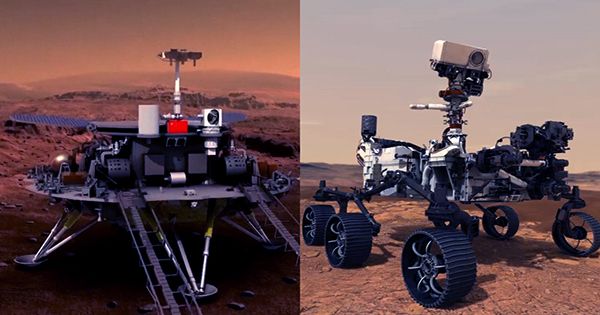The Tianwen-1 mission, China’s first search for the Red Planet, is expected to enter its next critical phase. Its lander and rover are expected to experience “seven minutes of terror” on their way to Mars, separated from orbit. Sources said the atmospheric entry will take place on May 14 at 6:11 pm ET (11:11 pm UTC). The lander will come down through the atmosphere, covered by heat. It will then place a parachute to slow down its ascent.
So far, this is consistent with what NASA’s perseverance has done in terms of its atmospheric penetration. But unlike the NASA rover – which was skyscraper to land it slowly – the lander will do all the work here. Retrorockets will eventually allow the system to soften in Utopia Planitia. If everything goes according to plan, it will set up a ramp from which the rover can land. The rover is called Zhurong after a Chinese mythological figure involved in the fire. It is equipped with Martian surfaces: cameras, spectrometers, a weather station and an interesting suite for exploring a magnetic field detector.

The most striking device is ground-penetrating radar that will create images about 100 meters (330 feet) below the surface of the Red Planet. While orbiting Zhurong, Tianwen-1 will continue to observe the planet’s orbit. Orbits can take detailed pictures of Mars from orbit, study its surface, satellites, atmosphere and magnetism. The observations of this pair will complement each other very well. Although it is China’s first inter-military mission, it has been part of the country’s success in recent years. With the help of Chang’s 4 missions, it made the first lander and rover landing at a distance of the moon.
And its successor, Chang’e, brought 2 kilograms (4.4 pounds) of rock from the surface of the moon 5 months ago and brought it back. If the landing is successful, China will become a soft land and third country rover deployment on Mars. Zhurong is expected to work for 90 one-time – one sol one Martian day – which coincides with 92 days on Earth. It was the same expectation that NASA had for Rovers Spirit and Opportunity, both of which orbited Mars for years after the end of their official missions. Hopefully, it could be in the case of Zhurong too.
















